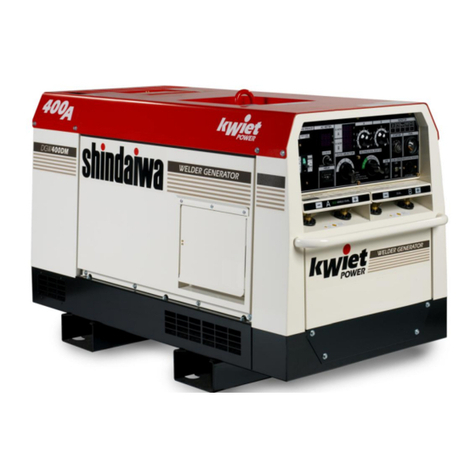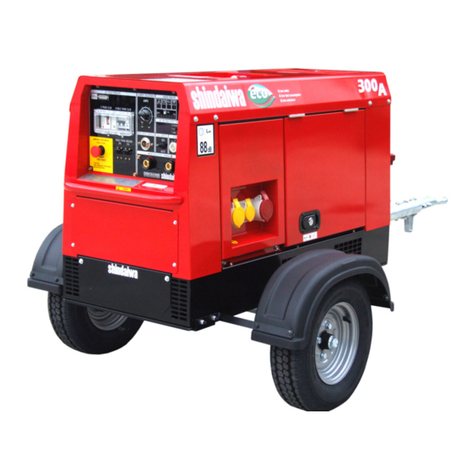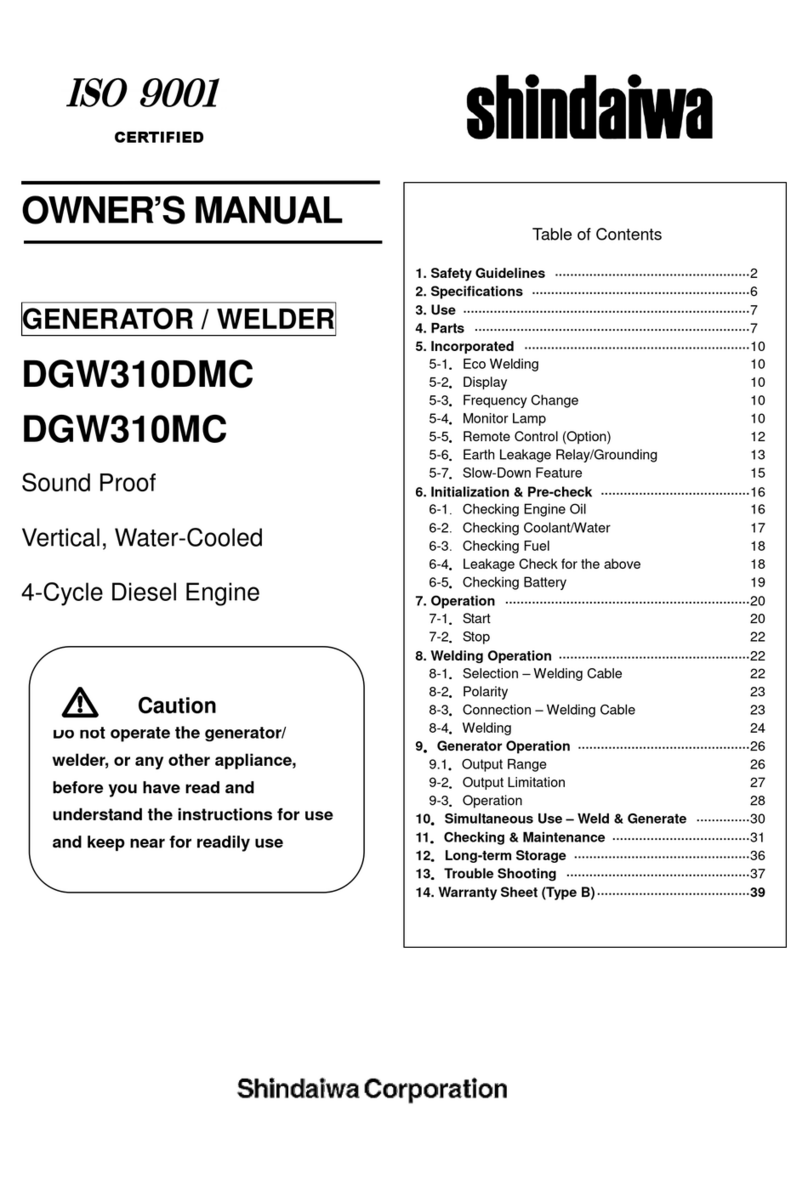1. Safety Guidelines
Danger : Suffocation from exhaust fume
zExhaust fume from the engine contains many elements harmful to human. Do
not operate this equipment in poorly ventilated area, such as inside a room or in
a tunnel.
Danger : Electric Shock
zDo not touch the output terminals during operation.
zDo not insert metal objects (such as pin or wire) into plug-in receptacles.
zDo not touch wiring or electric parts inside the equipment during operation.
zBefore connecting or disconnecting a load cable from output terminals, always
turn the circuit breaker to OFF position.
zBefore connecting or disconnecting a welding cable from output terminals, stop
the engine, and remove the engine key.
zBefore performing any equipment check or maintenance, stop the engine, and
remove the engine key. A person performing the maintenance should always
keep the key.
Danger : Burns
zDo not open the radiator cap while operating this equipment or immediately
after stopping the equipment, to avoid sustaining burns from hot vapor.
Danger : Injuries
zClose all doors and place locks during operating this equipment, to avoid
injuries by unintentionally touching cooling fan and fan belt.
Caution : Suffocation from exhaust fume
zDo not point the exhaust fume toward pedestrians or building.
Caution : Suffocation from welding fume
zBe sure to wear a fume proof mask in operation, because welding fume
contains poisonous gas and dust. Pay attention to the airflow direction and
sufficient ventilation also in order to prevent from inhaling the fume.
Caution : Injuries to eyes and skin
zBe sure to wear spark protection glass(es), long-sleeve shirts, gloves, etc. in
order to protect eyes and skin from harmful spark in welding.
zBattery fluid contains diluted sulfuric acid. Avoid contact with eyes, skin or on
clothing. If the acid comes in contact, especially with eyes, flush with a lot of
water, and contact your physician immediately.
Caution : Electric shock
zDo not flush water onto the equipment nor operate it in the rain.
Caution : Explosion
zDo not use the equipment or charge the battery, in the case the battery fluid
level is lower than the LOWER level.
zBattery may emit some combustible gas, so keep it away from fire and sparks.
- 2 -



































